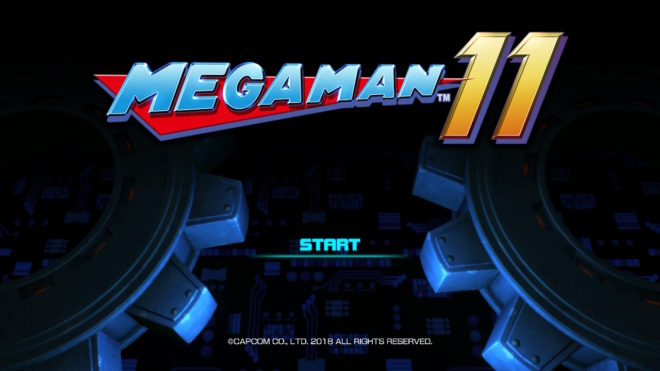Retro revivals are all the rage these days. Classic game series long dormant have been resurfacing en masse over the past several years; between compilations and completely new titles, Spyro, Crash Bandicoot, Castlevania, Mega Man, Metroid, and even Battletoads have all returned after half a decade or more of absence. While the revival of an old favorite is sure to appeal to longtime fans, it also gives new players a chance to try a series they’ve heard of but never played. So how can a game appeal to two such diametrically divided bases? Today, we’ll take a look at how Mega Man 11 answers that exact question with its difficulty options.

Before we get to that, there’s a soapbox I’m going to step up on for a moment. The four difficulty options Mega Man 11 offers are, in ascending order: Newcomer, Casual, Normal, and Superhero. It makes sense to somehow indicate the baseline experience, for players who want to dip their toes into the most representative choice before adjusting as needed. However, calling that baseline “Normal” carries the implication that any other experience is in some way abnormal. There’s nothing wrong with Newcomer or Casual—they’re certainly better names than “easy”—but by simply existing as less challenging alternatives to Normal, they can be easily dismissed as entirely lesser ways to play the game. While the intent of each choice is clear, titling the option as “Medium,” or even keeping with the theme and going for “Mega” would cut off the problem in advance. Throughout this post, I’ll continue to use the game’s terminology, but I felt it important to address that issue in advance.
Understanding the difficulty options will be quite a challenge without knowledge of Mega Man itself, so here’s a quick rundown for any newcomers. Mega Man is an action-platformer affectionately dubbed “Jump-n-Shoot Man” in some circles. Since its inception in 1987, its defining attributes have been precise platforming and combat with a variety of long-range weapons.

Defeating bosses—which can be tackled in any order, unique among other popular games at the time—grants the player a new weapon based on the boss’ abilities, which are particularly effective against one of the other bosses. The series’ difficulty was well-known to the point that songs were written about it—not the picture of beginner-friendly. Veterans, however, reveled in the precision the classic games demanded; anything less would be a disappointment.
Mega Man 11’s difficulty options provide both camps ample opportunity for satisfaction. Considering Normal as the equivalent to classic games’ difficulty, there is one more difficult—enough to satisfy the most intense fans—and two intended to give less experienced players the chance to get through the game. The names indicate rather well the audience they’re designed for: Newcomer is supportive for players who are new to platformers, or games in general; Casual is aimed for players with a bit of experience who may not have played a Mega Man game before. Their changes relative to Normal are conceptually similar, but Newcomer offers more thorough support for a less experienced player.
The changes in Newcomer mode make each room an isolated obstacle. Compared to Normal mode, each stage has a few enemies removed, keeping the focus on essential enemies and platforming. With Beat Calls to rescue them from pits, Pierce Protectors to do the same from spikes, and Super Guards to optionally reduce damage further, the player is free to attempt each step as many times as it takes to overcome it.
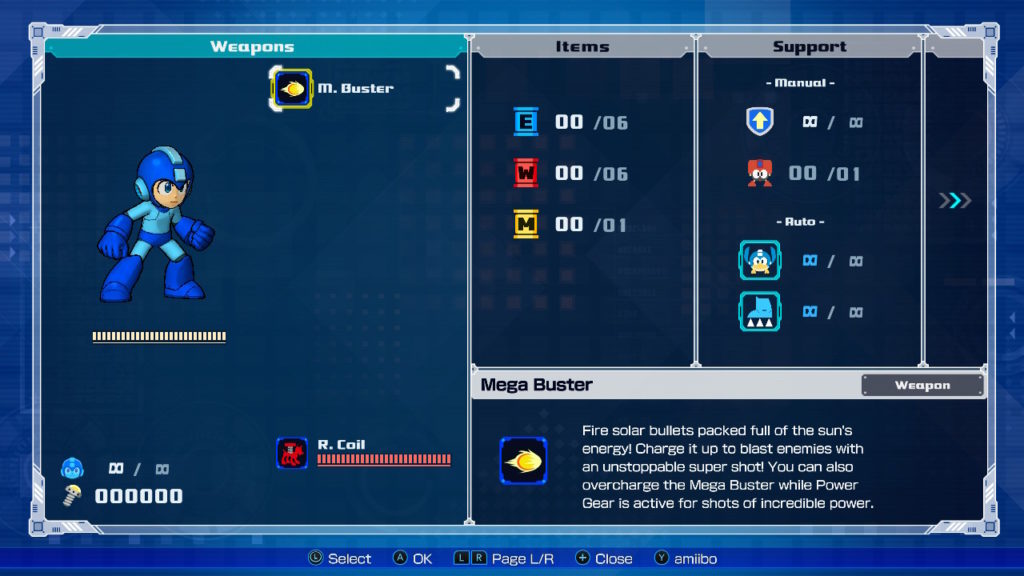
Unlimited lives prevent them from needing to redo previously conquered steps and provide the chance to practice once they reach the boss at the end of a stage. The player also deals additional damage and takes less from enemies, further bolstering their chances. A new player has the scaffolding they need to move at their own pace and build up to any further attempts—or to have the new experience and move on to other things.
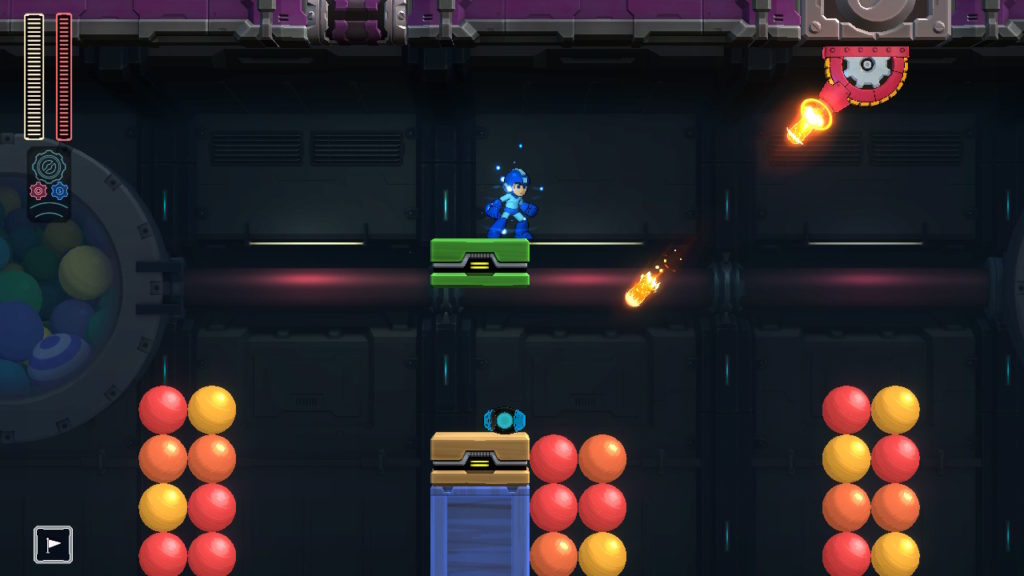
Casual kicks things up a bit without reaching the level of Normal. Unlike Newcomer, the player starts with no items, deals their usual level of damage, and has a finite number of lives. The items placed throughout the level are still occasionally upgraded from their Normal counterparts, and weapon energy refills on death to keep the player moving forward. On a personal note, Casual mode made for a nicer revisit to the game after a couple of years away.
Superhero, of course, takes things in the opposite direction. Enemies deal more damage, though the player’s attacks hit just as hard as in Normal or Casual. Bosses also exhibit slight changes to their patterns, often moving or attacking faster than before. The other primary difference comes in the form of items: while enemies ordinarily have a chance at dropping health, weapon energy, or other useful items on defeat, they won’t drop anything but currency in Superhero mode.
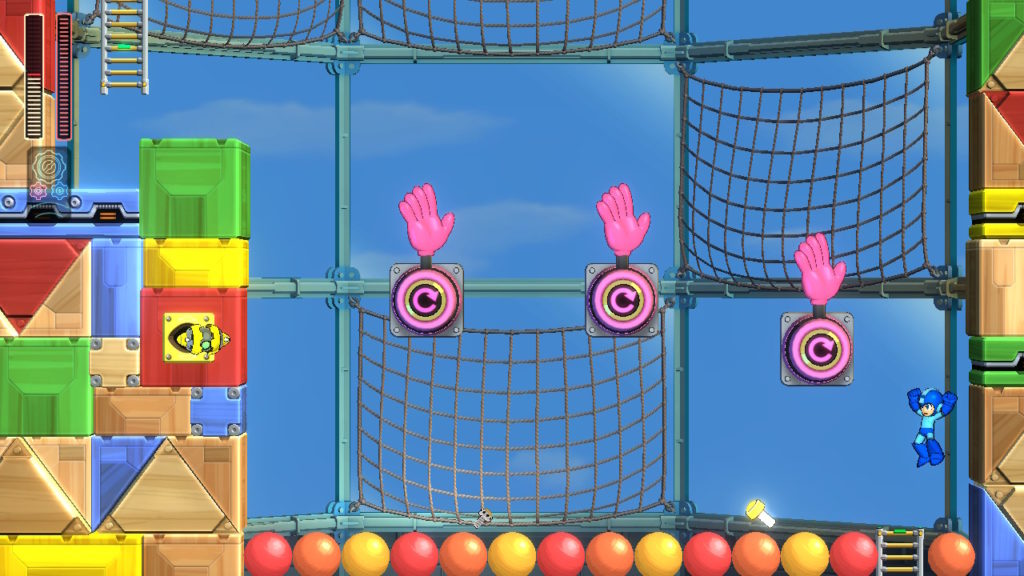
This has pros and cons, overall. Any damage the player takes cannot be recovered by normal means, nor can they restore energy to their weapons mid-stage. However, the massive increase in currency drops mean that the storefront is their oyster—and items collected in a stage are preserved through exiting or game overs. Superhero mode actually offers easier access to the myriad purchasable upgrades and recovery items, so the difficulty the mode presents is still up to the player.
This segues well into my final point, and an overarching one: the mechanics of the game also lend themselves to fine-tuning the challenge to fit the player’s preference. Mega Man 11 introduced the new Double Gear mechanic to the series. With the push of a button, they either draw greater combat power or speed up to navigate around enemies and obstacles more easily.
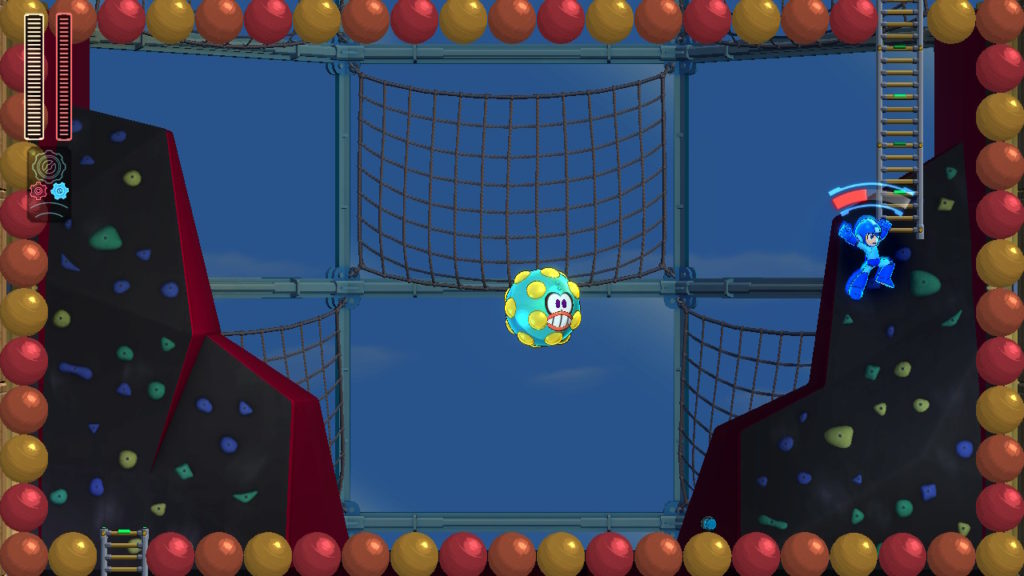
Many setpieces in the game’s environment are designed to encourage the use of the Speed Gear, and bosses often ask for one or the other to simplify their battles. However, each and every one of these obstacles can be overcome without ever using a Gear ability.

Optional mechanics, optional upgrades, and even classic Mega Man challenges—never using more than the basic Mega Buster and required mobility tools, never taking damage, and the like—provide all the personalization the player needs to make the experience their own.
Bringing back a dormant franchise is no easy task. Not only does it run the risk of alienating old fans with modernization that overlooks what they loved about the series, but if it leans too much on the past it can ostracize new players as well. Taking the fun of a classic favorite and effectively representing it in a modern way requires understanding of the series’ core features—good and bad—to update it in the right ways without losing heart. If reviews and sales numbers are any indication, Mega Man 11 hit nearly all of the right notes; excluding compilation titles, it is the fourth-highest rated and third-highest selling game in the entire franchise. New and old players alike enjoyed the first Mega Man title since 2010, and its difficulty settings tuned to their individual needs no doubt played a part.

Sources:
Capcom Platinum titles: http://www.capcom.co.jp/ir/english/finance/million.html
Mega Man franchise Metacritic: https://www.metacritic.com/search/game/mega%20man/results?sort=score&page=0
